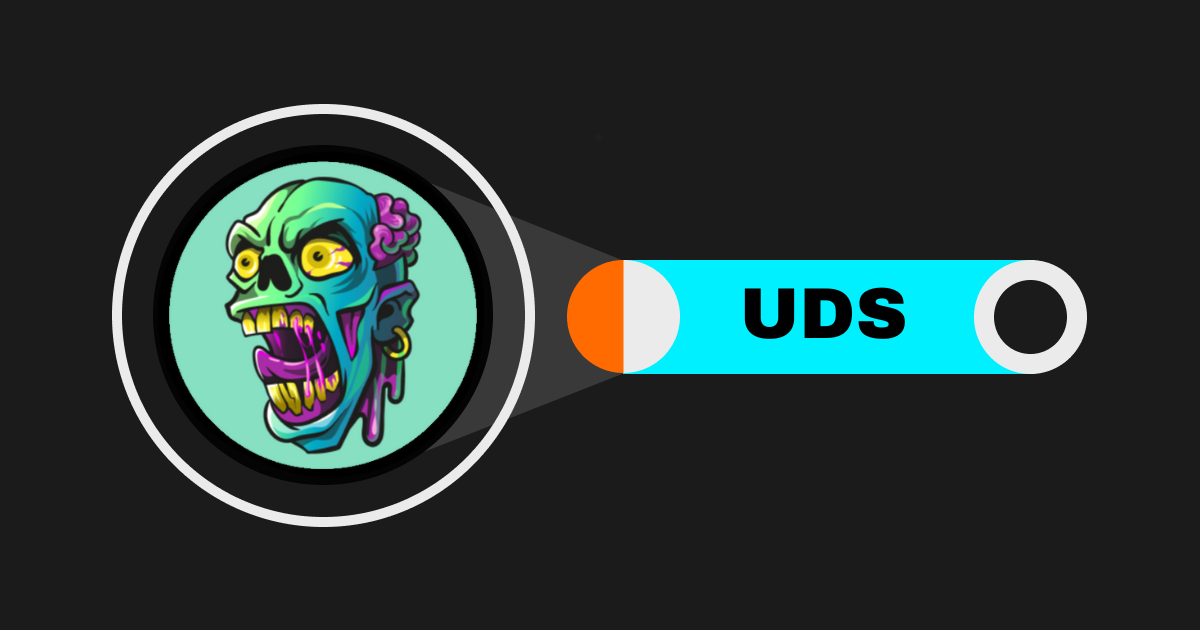
O monecie
Kalkulator ceny
Historia cen
Prognoza ceny
Analiza techniczna
Przewodnik po kupowaniu monet
Kategorie kryptowalut
Kalkulator zysków

Cena Victoria VRVR
Jakie jest Twoje dzisiejsze nastawienie do Victoria VR?
Dzisiejsza cena Victoria VR
Jaka jest najwyższa cena VR?
Jaka jest najniższa cena VR?
Prognoza ceny Victoria VR
Jaka będzie cena VR w 2026?
Jaka będzie cena VR w 2031?
Historia cen Victoria VR (PLN)
 Najniższa cena
Najniższa cena Najwyższa cena
Najwyższa cena 
Informacje rynkowe Victoria VR
Historia kapitalizacji rynkowej Victoria VR
Rynek Victoria VR
Posiadane Victoria VR
Matryca dystrybucji posiadanych Victoria VR
Posiadane Victoria VR według koncentracji
Adresy Victoria VR według czasu posiadania

Oceny Victoria VR
Informacje o Victoria VR (VR)
Czym jest Victoria VR?
Victoria VR to pierwsza oparta na technologii blockchain gra MMORPG w wirtualnej rzeczywistości z realistyczną grafiką zbudowaną na silniku Unreal. Projekt został założony przez Ondřeja Dobruský'ego i Adama Béma w 2018 roku. Victoria VR to samowystarczalny wirtualny świat, który nie polega tylko na swoich twórcach, ale rośnie i ewoluuje dzięki aktywnemu udziałowi całej społeczności. To wszechświat, w którym kreatywność nie zna granic, pozwalając użytkownikom urzeczywistniać swoje najśmielsze marzenia dzięki nieograniczonym możliwościom pracy, tworzenia, odkrywania oraz handlu.
Victoria VR to ambitny projekt, którego celem jest połączenie rozrywkowych aspektów tradycyjnych wirtualnych światów z praktycznością i innowacyjnością technologii blockchain. Chodzi o stworzenie kompleksowego ekosystemu, który łączy edukację, produktywność, gospodarkę i rozrywkę. Metaverse został zaprojektowany jako uniwersalna platforma dla wszystkich wirtualnych rzeczywistości, gier, zdecentralizowanych aplikacji (dAppów) i nie tylko. Ponadto jest wspierany przez natywny token VR, który ułatwia transakcje, zarządzanie i mnóstwo innych interakcji w tym cyfrowym wszechświecie.
Źródła
Oficjalne dokumenty: https://www.victoriavr.com/whitepaper
Oficjalna strona internetowa: https://www.victoriavr.com/
Jak działa Victoria VR?
Victoria VR to oparta na blockchainie gra MMORPG, w której użytkownicy mogą zanurzyć się w świecie wirtualnej rzeczywistości z realistyczną grafiką dzięki mocy silnika Unreal. Platforma ta jest kompleksowym metaversum, która zawiera elementy zdecentralizowanych finansów (DeFi), niewymiennych tokenów (NFT) i gospodarki cyfrowej. Użytkownicy mogą angażować się w staking, zarządzanie i model „play-to-earn”, który nagradza aktywny udział i wkład w ekosystem. Projekt pozwala na zakup cyfrowej ziemi, budynków, zasobów i różnych przedmiotów – wszystkie reprezentowane jako NFT, które można posiadać, kupować i sprzedawać, dodając warstwę własności i inwestycji w wirtualnym świecie.
Ekosystem Victoria VR został zaprojektowany tak, aby był inkluzywny i ekspansywny, oferując zadania, wydobywanie zasobów, dostosowywanie awatara oraz rynek handlu NFT czy wirtualnymi aktywami. Ekosystem ten obsługuje szeroki zakres działań – od gier i eksploracji po spotkania biznesowe, edukację i wydarzenia rozrywkowe, dzięki czemu jest wszechstronną platformą dla zróżnicowanej bazy użytkowników. Projekt kładzie nacisk na zarządzanie przez użytkowników, umożliwiając posiadaczom tokenów VR i właścicielom gruntów głosowanie nad kluczowymi decyzjami i proponowanie zmian, zapewniając, że metaverse ewoluuje w kierunku korzystnym dla całej społeczności.
Czym jest token VR?
VR to natywny token ekosystemu Victoria VR. Służy do kupowania i sprzedawania wirtualnych ziem, przedmiotów, zasobów oraz uzyskiwania dostępu do różnych usług i doświadczeń w ramach platformy. Tokenomia VR ma na celu wspieranie samowystarczalnej gospodarki, z wyraźnym przydziałem na rozwój, nagrody i rezerwy strategiczne. Użytkownicy mogą zdobywać tokeny VR poprzez udział w misjach, stakowanie i przyczynianie się do rozwoju ekosystemu, dostosowując zachęty między platformą a jej użytkownikami. Całkowita podaż VR wynosi 16,8 miliardów tokenów.
Co decyduje o cenie Victoria VR?
Na cenę tokena Victoria VR (VR) wpływa złożona interakcja czynników, które rezonują z szerszą dynamiką rynku krypto, w tym podaż i popyt, nastroje rynkowe, postęp technologiczny w ekosystemie Victoria VR oraz ogólne trendy w sektorach blockchain i wirtualnej rzeczywistości. Ponieważ inwestorzy i entuzjaści uważnie monitorują prognozy cen VR w 2024 r., historyczne wykresy tokena oferują cenny wgląd w jego wydajność i potencjał inwestycyjny. Stopień adopcji platformy Victoria VR, partnerstwa i użyteczność tokena VR w metaversie dodatkowo zwiększają jego wartość. Podobnie jak w przypadku każdej inwestycji w kryptowaluty, potencjalne zyski z VR zależą od zmienności rynku, zmian regulacyjnych i sukcesu projektu w tworzeniu zrównoważonego i angażującego wirtualnego świata, co sprawia, że inwestorzy muszą przeprowadzić dokładne badania i rozważyć długoterminowe perspektywy Victoria VR w przestrzeni blockchain.
Osoby zainteresowane inwestowaniem w Victoria VR lub jej handlem mogą się zastanawiać, gdzie kupić VR? VR jest dostępny na wiodących giełdach, takich jak Bitget, która oferuje bezpieczną i przyjazną dla użytkownika platformę dla entuzjastów kryptowalut.
VR do lokalnej waluty
- 1
- 2
- 3
- 4
- 5
Jak kupić Victoria VR(VR)

Utwórz darmowe konto Bitget

Zweryfikuj swoje konto

Konwertuj Victoria VR na VR
Dołącz do copy tradingu VR, obserwując wybitnych traderów.
Wiadomości dot. Victoria VR


Czym jest Undeads Games (UDS)? Flagowym projektem Undeads Games jest MMORPG „Undeads”, gra osadzona w postapokaliptycznym metaversie, w której gracze wybierają strony w odwiecznej bitwie pomiędzy ludźmi i zombie. Gra została zaprojektowana jako izometryczna gra survivalowa z mechaniką walki i akcji
Nowe notowania na Bitget
Kup więcej
Często zadawane pytania
Jaka jest obecna cena Victoria VR?
Czym jest 24-godzinny wolumen obrotu Victoria VR?
Jaka jest najwyższa dotychczasowa wartość Victoria VR?
Czy mogę kupić Victoria VR na Bitget?
Czy mogę uzyskać stały dochód z inwestycji w Victoria VR?
Gdzie mogę kupić Victoria VR z najniższą opłatą?
Gdzie mogę kupić Victoria VR (VR)?
Sekcja wideo — szybka weryfikacja, szybki handel

Bitget Insights




Powiązane aktywa



































Dane z mediów społecznościowych dot. Victoria VR
W ciągu ostatnich 24 godzin wynik sentymentu mediów społecznościowych wobec Victoria VR wynosił 3, a sentyment mediów społecznościowych do trendu cenowego Victoria VR wynosił Byczy. Ogólny wynik Victoria VR w mediach społecznościowych wyniósł 0, co plasuje go na 602. miejscu wśród wszystkich kryptowalut.
Według LunarCrush, w ciągu ostatnich 24 godzin kryptowaluty zostały wspomniane w mediach społecznościowych łącznie 1,058,120 razy, przy czym Victoria VR był wspominany ze współczynnikiem częstotliwości 0%, zajmując 454. miejsce wśród wszystkich kryptowalut.
W ciągu ostatnich 24 godzin było łącznie 42 użytkowników dyskutujących o Victoria VR, z łączną liczbą Victoria VR wzmianek o 22. Jednak w porównaniu z poprzednim 24-godzinnym okresem, odnotowano spadek liczby unikalnych użytkowników o 19% oraz wzrost wzmianek o 29%.
Na Twitterze w ciągu ostatnich 24 godzin pojawiło się łącznie 0 tweetów wspominających Victoria VR. Wśród nich 0% ma bycze nastawienie na Victoria VR, 0% ma niedźwiedzie nastawienie na Victoria VR, a 100% jest neutralny na Victoria VR.
W serwisie Reddit w ciągu ostatnich 24 godzin pojawiło się 1 postów wspominających o Victoria VR. W porównaniu z poprzednim 24-godzinnym okresem, odnotowano 0% spadek liczby wzmianek.
Całościowy przegląd społecznościowy
3